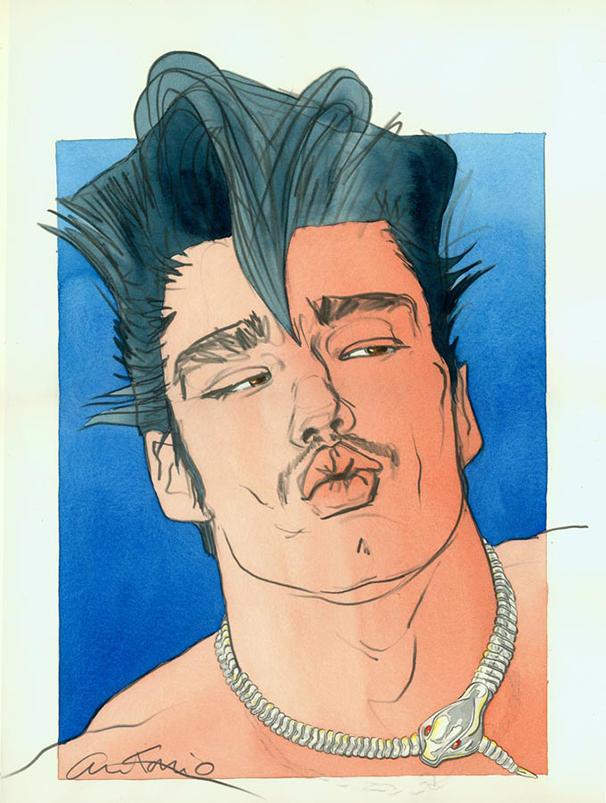Erotic gay art, once hidden, on display in SoHo
April 7, 2014

Museum-goers are flocking to the Leslie Lohman Museum of Gay and Lesbian Art for a stimulating, never-before-seen exhibit.
“Stroke: From Under the Mattress to the Museum Wall,” which is on display from March 28 to May 25, features gay erotica meant to explore sexuality and identity.
Robert Richards, the curator of the exhibit, said he proposed the idea four years ago, and it took off in the past year after Hunter O’Hanian became the museum’s executive director.
Richards said the exhibit visually explicates an important period in gay history.
“The show is about beauty — beautiful drawings [and] beautiful men,” Richards said. “It’s a huge body of work that can’t be forgotten because it defines a whole era of gay men’s lives.”
The 80 illustrations from 25 artists, originally published in magazines from the 1950s to the 1990s, are now mounted on the red and yellow walls of the museum. The exhibit also has pieces from as recently last year. The media of the erotica encompass ink, paint, pencil and gouache.
In the 1950s, the U.S. government sanctioned all public materials displaying sexual perversion, which included anything homosexual. However, gay men wanted to explore their sexual identities, and publishers hurdled these sanctions by publishing erotic illustrations in periodicals advertised as bodybuilding and strength magazines.
The illustrations are outlandishly sexual, displaying hyper-masculine men enjoying each other’s company and embracing their natural sex drives. The men depicted in the illustrations are rugged and have hard, chiseled bodies. Although looking superhuman, the subjects of the illustration were what gay men aspired to be, Richards said.
However, the magazines put restrictions on the illustrations. For example, Richards said the men depicted could not be touching each other’s genitals, and the illustrations could not show any bodily fluids or anal penetration.
The magazines were available at most American drugstores and newsstands. Richards said buying these magazines proved to be challenging, especially in small towns.
“They were difficult for a lot of people to buy because if you lived in a small town, the chances are that the drugstore owner or the newsstand guy knew you so you didn’t want to buy something so homosexual,” Richards said.
The magazines started off small and featured semi-clothed models. But, once money started to be made, the magazines increased in size and started featuring nudity, though never straying from softcore depictions of men. From these magazines, more subgenres developed that displayed more hardcore scenes.
Steinhardt freshman Emma Sittig said she thinks expositions of sex, such as “Stroke,” help her understand aspects of life she was otherwise not exposed to in public.
“Sex is something that a lot of people aren’t comfortable talking about, so I feel like it’s easy for people to look at the art and call it skanky,” Sittig said. “But after learning about the history of the subculture, and the oppression many gay men faced, I was able to see beyond the obviously graphic nature of the pieces.”
*Emma Sittig is a contributing writer.
A version of this article appeared in the Kavish Harjai is a news editor. Email him at [email protected].
























































































































































